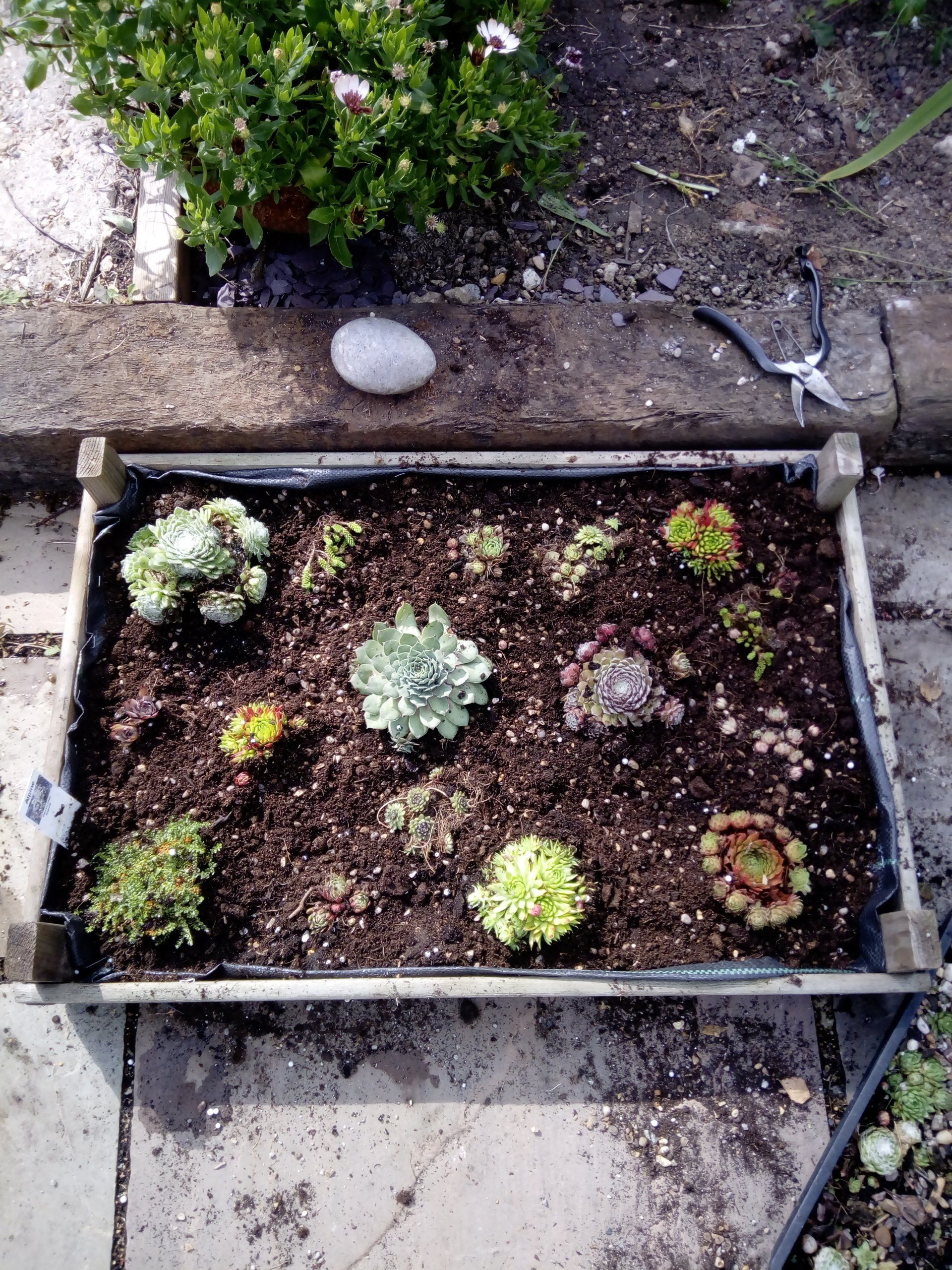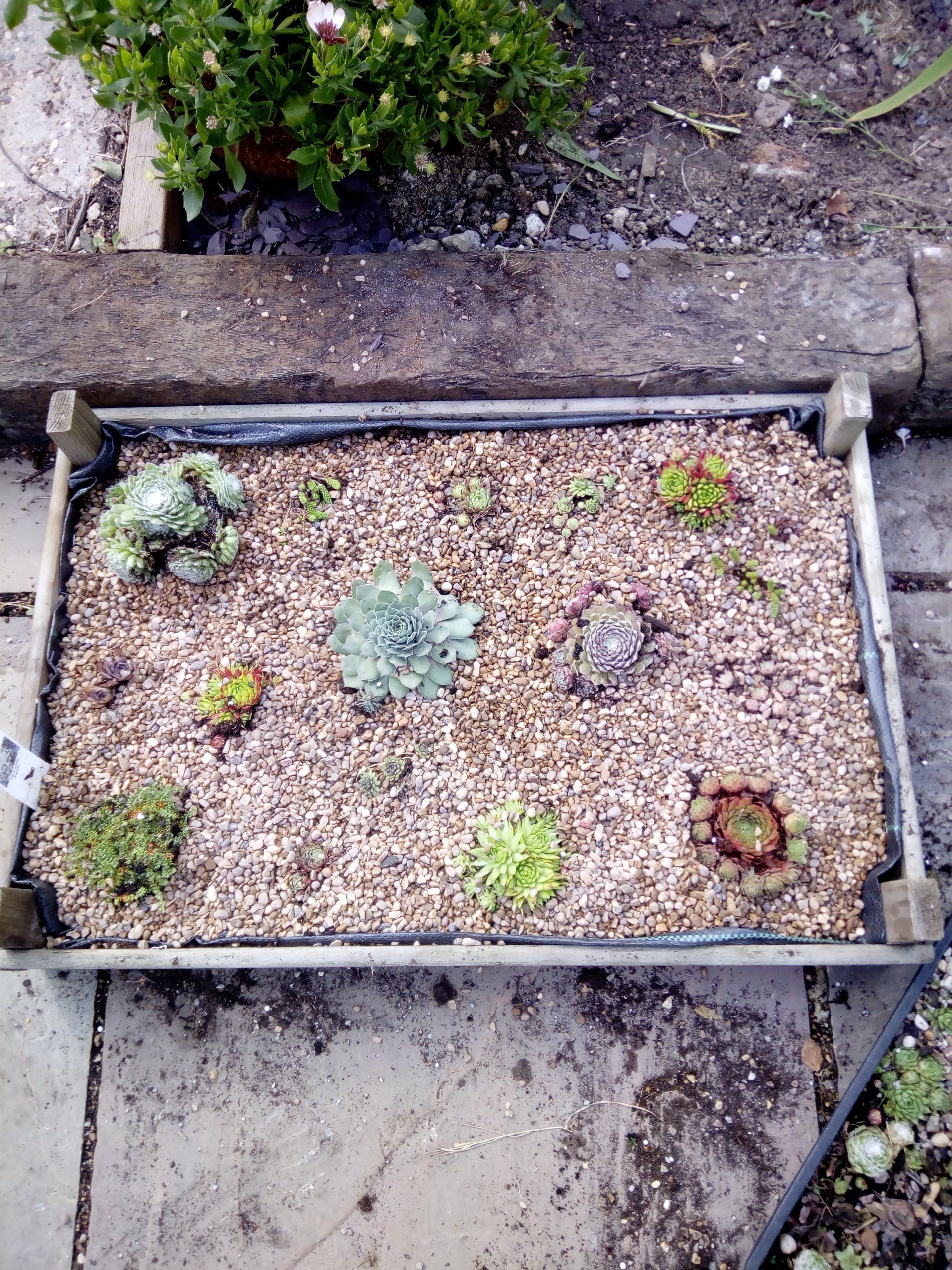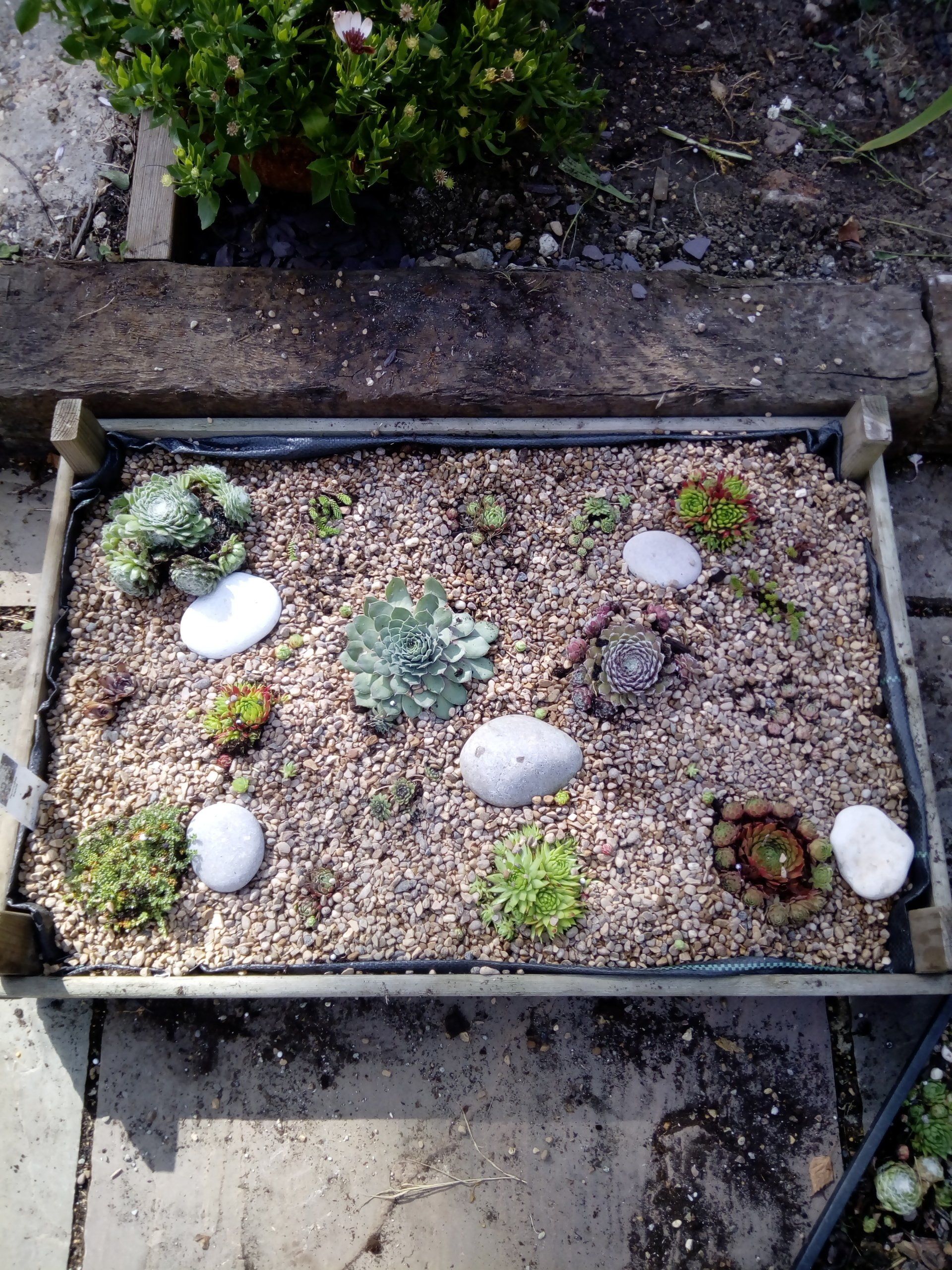How to make a Houseleek (Sempervivum) Garden
Sempervivums, also known as Hens and Chickens or Houseleeks are an easy to grow succulent that can stay outside in the garden all year. These amazing plants form rosettes in every shade of green and red. There are even varieties called arachnoid houseleeks that are covered in a furry cobweb like coating. Houseleeks are great for children to grow. They don't need much soil and don't require much watering. If they are planted in the garden you won't ever have to water them, the rain should be enough.
In this article we have planted houseleeks in an old bulb crate but they will be equally happy in any container as long a the soil is well drained.
The completed article. This houseleek garden is about two years old.
This planted bulb crate is about two years old. It was planted with a range of houseleeks that had been grown in 9cm pots. The white looking houseleeks in the middle are cobweb houseleeks. They have spread quickly and have formed hundreds of offsets. This arrangement shows the variety of colours that houseleeks come in, from the white coloured cobweb houseleeks, through the greens and reds to a glauca blue.
The bulb crate is quite shallow, the edges are only two inches high, with about one inch of soil. Houseleeks need very little compost to grow in! The completed article. This houseleek garden is about two years old.
Step 2
Fill the tray with compost. Whatever you use needs to be well drained. You could buy a proprietary cacti and succulent compost or make your own. To make you own buy a good quality multipurpose compost and add grit or perlite for drainage. Perlite works the same as grit but is beneficial if weight is an issue, as it is very light. Mix the compost and grit 50/50.
Step 4
Add grit or gravel on top of the soil and around the houseleeks and if you can under the rosettes. Not only does this look good it keeps the rosettes off the soil so prevents them from rotting off. There's no need to water in, but you can if you like. It should rain soon enough for the houseleeks.






